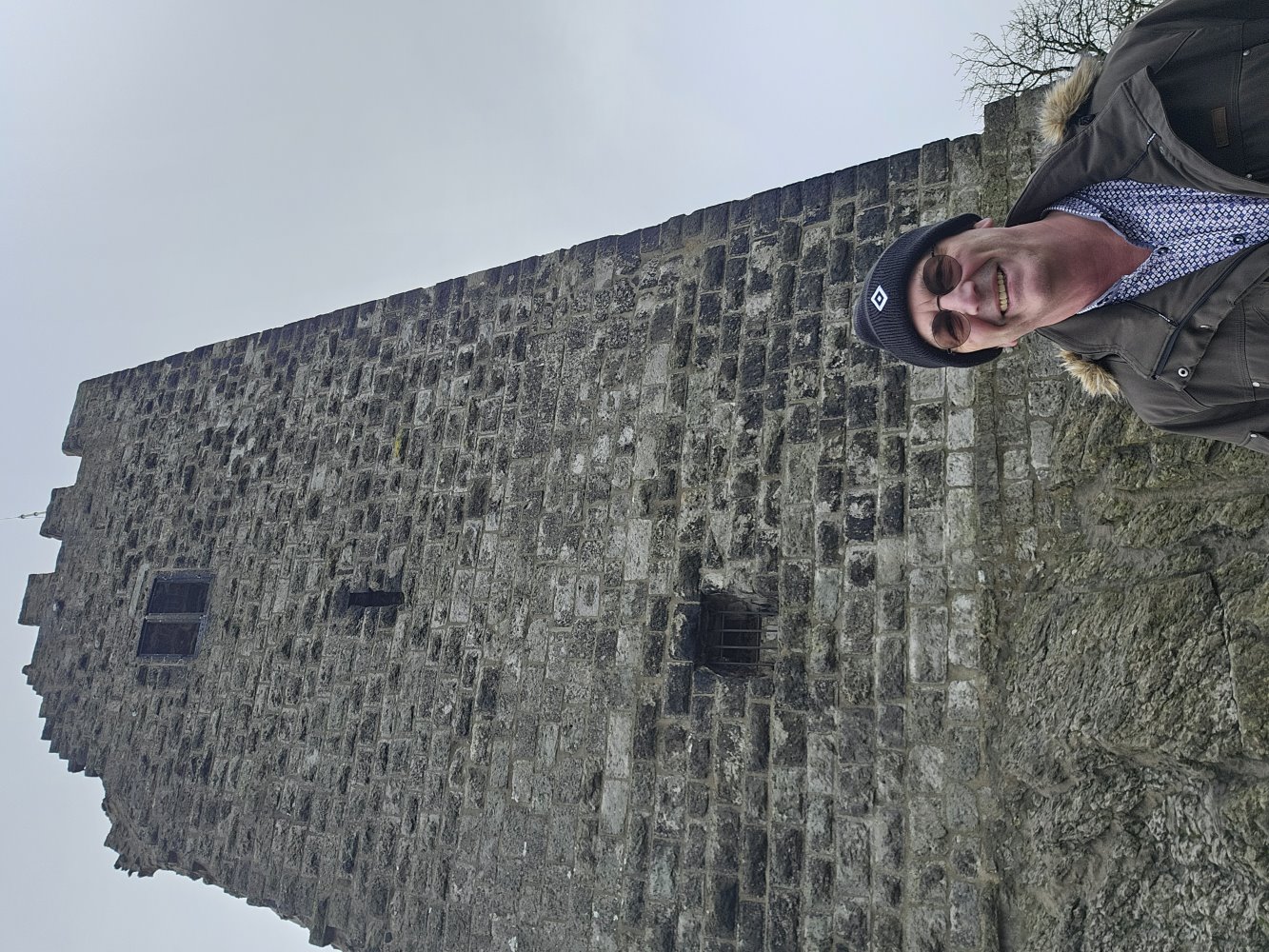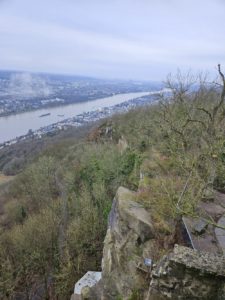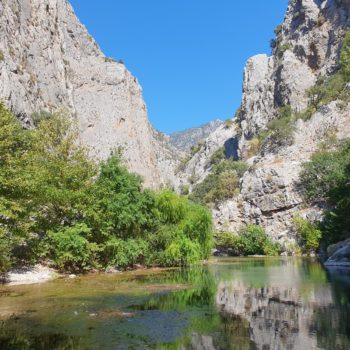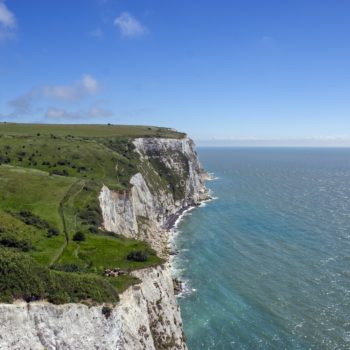This year, during a visit to Cologne, I had the opportunity to make a return visit to the Drachenfels, where I decided that it was time for me to finally make my assault on climbing this hill. The Drachenfels in the Siebengebirge region of Germany is a ca. 1,000-foot-high rock, on the top of which a ruined castle perches. The rock itself was formed by volcanic activity, and is a plug formed by rising magma which was unable to break through. In time it cooled off and formed the hill.
According to popular German legend it was in a cave on this hill that Siegfried killed the Dragon (The Nibelungenlied). Although it is rumoured by some that the dragon survived this attempt on its life. Other legends are told too, but dragons are the predominant feature of all these tales.
The castle on the Drachenfels, however, plays no part in the epic Nibelungen poem. This was built several hundred years later in the 12th century by Archbishop Arnold I of Cologne.
The Drachenfels is mentioned by Lord Byron in “Childe Harold’s pilgrimage“.
The castled crag of Drachenfels
Frowns o’er the wide and winding Rhine.
Whose breast of waters broadly swells
Between the banks which bear the vine
Later and more pragmatically the rock provided stone for the building of the Cologne Cathedral.
A challenging climb
The rock is a challenging climb for people of my age, but after visiting the Castle Drachenburg – a neo-gothic castle on the lower banks of the Drachenfels – a few years ago, I was determined to make it this time around. There is a rack railway that goes up to the top. But at the time of our visit, it was closed for maintenance.
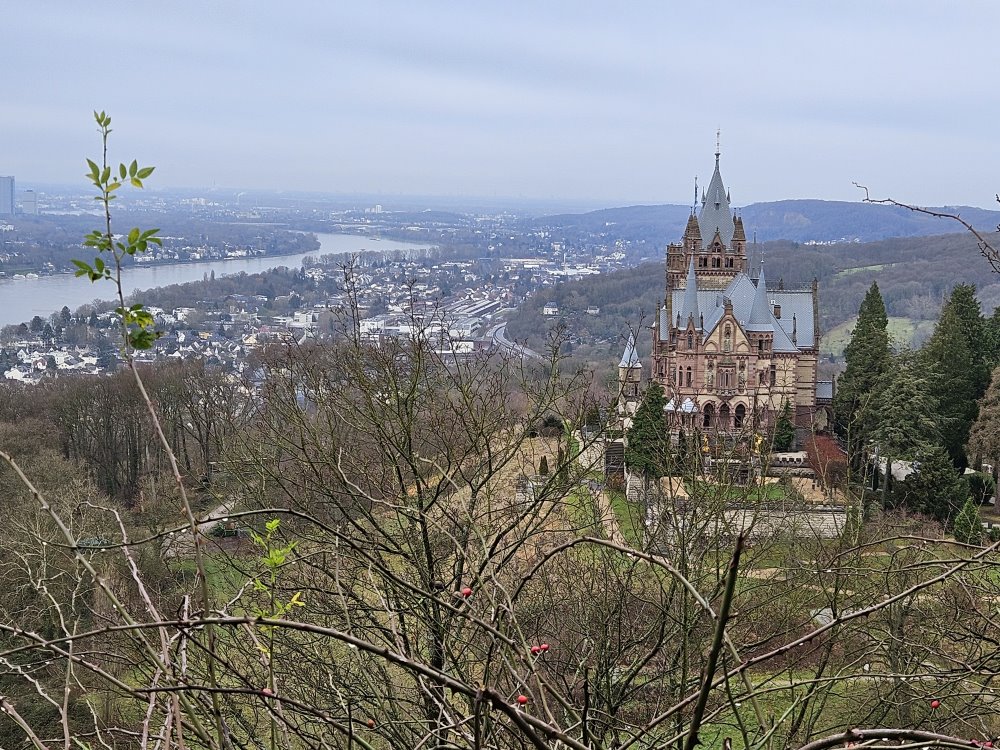
Up to the Drachenburg castle the route is quite simple. Just below the burg the visitor comes across the Nibelungenhalle. This hall contains paintings of Richard Wagner’s depiction of the Nibelungenlied. He of course told the story in his opera “Der Ring des Nibelungen”.
After the Burg, the going gets considerably steeper, before one reaches the platform just underneath the ruined castle. Beneath the summit concrete blocks have been inserted into the rock to strengthen the hill itself.
A breathtaking view
The view from the castle is breathtaking. From our vantage point we followed the route of the Rhine River as it meandered past. From here we can see the city of Bonn on both banks of the Rhine. On clear days the two towers of the Cologne Cathedral are clearly visible.
If you are in the area, this is a place well worth visiting.
